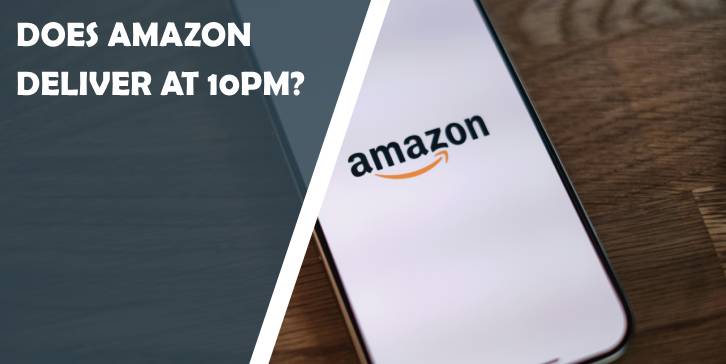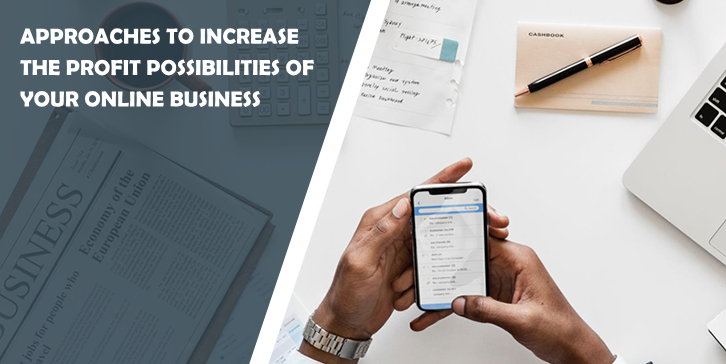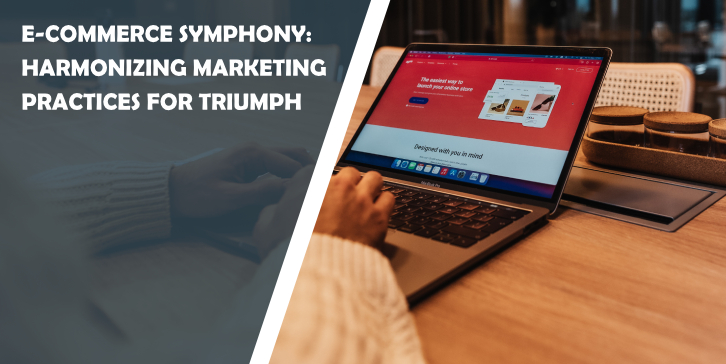As a WooCommerce store owner, you always want more of your visitors to convert to buyers. But you know very well how difficult it is to increase the conversion rate of your store due to the high competition out there today.
However, you can stay one step ahead if you follow certain processes that will make a difference for your WooCommerce store.
Today, we will focus on 7 ways you can effectively increase your WooCommerce store conversion. We have also gathered the most efficient tools, tips, and examples for you to implement these ideas in your store.
Most successful WooCommerce stores are already using these hacks and it is time you should follow them as well.
So, let’s dive into it.
1. Promote Your Products on Google Shopping

Google shopping is the largest online merchant in the world.
In the US, 76.4% of all ad spends are on Google Shopping. It also generates 85.3% of all organic clicks.
Google Shopping allows you to upload your store products to its merchant center. Most people trust Google, so the traffic it gets is immense.
This traffic is the reason why uploading your products into Google Shopping multiplies your conversion over three times.
Despite having thousands of products, Google Shopping Ads can get you more customers than your own marketing efforts. In fact, all the major brands run Google Shopping Ads even if their sites are super popular.
On the contrary, even if you have a small WooCommerce store and the site is not so popular, Google Shopping Ads will still help you generate traffic and sales.
Now, uploading products and hoping for sales is an easy task. However, you need to focus on two important facts.
i) Follow Google’s Feed Format Accurately
Since Google is a mammoth, they only go by their own rules. Hence, they have set certain guidelines to follow when creating product feed.
You have to provide all the information that Google asks for and follow a specific feed format in order to get approved. For example, you must provide GTIN and Brand name along with several other necessary attributes.
Also, they have a fixed set of categories and you need to map your categories according to it, i.e., your products should be set under specific categories set by Google. (You do not need to match your store categories accordingly, there are plugins that can help you with category mapping when generating the feed.)
Google algorithm only wishes to promote the best to the viewers and hence they want you to maintain accuracy with the format for better output.
ii) Optimized Product Data
While following Google’s guidelines, you still have to keep in mind that you need to include data that is SEO optimized.
Google won’t allow you to sound like an advertisement, but it is expected that you use relevant keywords in the title and description that matches the search terms of your ideal prospects.
Even if you follow the required guidelines and are ready to pay, Google algorithm still operates based on search relevancy whether it is for viewing relevant search results or showing Dynamic Ads.
You can read this guide to create proper WooCommerce product feed for Google Shopping.
Also, you can use a plugin called WooCommerce Product Feed Manager to generate product feed real quick in the proper feed format.
2. Help Prospects Find The Right Product

Let’s say you did great with marketing for your WooCommerce store, but you may still lose prospects even after they come to your site.
Your site should be easy to use. Once you can create a simple and easy interface, the next thing to do is to make it easy for your prospects to find and purchase desired products on their own.
The more complicated the site will be, or the more difficult it will be for a prospect to search for the desired product, the sooner they will lose interest and leave to search through other websites.
Hence, make it easy for prospects to navigate and find the right products.
Here’s what you need to know for optimizing your WooCommerce store for easy navigation:
i) Establish A Smart Search
Make sure your site’s search engine is convenient. The smart search feature should include filter options, and keyword suggestions when inserting text for searching. This allows prospects to search for specific products.
The sooner they can find the desired product, the higher the chance they will purchase it (though it also depends on the prospects’ budget).
You can use certain plugins such as Relevanssi or Ajax Search Lite, to help you out with it since the default search option from WordPress or WooCommerce is not so efficient.
ii) Smooth Navigation Through Your WooCommerce Store
Smooth navigation for your store means having your products organized in categories, color, price, and other attributes so that a prospect can easily track their desired products.
Create a categorized menu with subcategories to identify the type of products.
For example, if you run a store for drinks, you can create a menu with Wine, Vodka, Beer, Rum, etc. And under each, you can either set subcategories Brands, Range of years and percentage of alcohol. Under these, you can have further subcategories.
For example, you can have a list of brands under the Brands tab-like, Smirnoff, Jack Daniels, Absolute, etc. Choosing one of these will take the customer to a page with a list of drinks that are available from the selected category.
Basically set subcategories that will make it easier to find a certain product.
You can also include AI Chatbots to assist people to find their way through your website. A great plugin that can help you out with this plugin is WoowBot.
3. Track Prospects And Stay Prepared

Once a prospect is on your site, his activities can indicate his motives on your site, interests, and preferences.
Every customer journey on a WooCommerce store is simple. They enter the store, they navigate to find a suitable product, add it to their cart, and then hopefully check out.
By tracking customer behavior, you can get the following insights.
i) Get Real-Time Data
Track where most of your traffic is generated from. Location wise, for example, you might have more people visiting from California. In digital terms, for example, you might get more traffic from your post on LinkedIn over other mediums.
ii) Have An Overview User Activities
Keep a track of which products or categories certain users have viewed. Also, keep track of the search terms they use when searching for a product. Also, you can implement heat-map tracking to understand which area of your site is more attractive and which is pushing prospects away.
iii) Analyze User’s Cart and Checkout Behavior
Keep track of where the prospect is focusing on during the cart and checkout page.
iv) Get Insights On Product and Sales Performance
A table to analyze how each product is performing within the selected date, with data such as quantity, price, number of add to cart and checkouts.
Using the above data you will be able to prepare yourself to avoid mishaps. You can set personalized campaigns for users that visited the most popular categories. You can create campaign funnels for abandoned cart situations. Also, it will help you track where your WooCommerce store is performing low.
You can integrate your site with Google Analytics for good analysis and use the plugin NewSlatPress to get specific statistics of any page on your site.
You can use Hotjar to implement heat-map tracking or session recording.
4. Compare With Your WooCommerce Store Competitors

Nowadays, every niche has huge competitions. Hence, it is important to be well-informed about your competitors.
When prospects go online to purchase products, they will find several websites selling similar products. Eventually, prospects take decisions based on 5 things.
i) Price
Some prospects only want the cheapest products. So a lower price range will win their loyalty. For example, a person could choose a backpack from an unknown brand rather than from EastPack due to a lower price.
ii) Quality
Some prospects simply want quality products and price doesn’t matter to them. For example, a prospect may purchase a 7th generation laptop rather than a 5th generation one, due to better quality in performance, even though the price is very high.
iii) Necessity
Prospects often need certain products as a necessity. For example, a person might need a certain medicine to cure a disease, and the price and quality won’t come into question.
iv) Credibility
Reviews, ratings, and recommendations matter. A prospect is more likely to buy a product with higher ratings that a product with lower ratings.
v) Available Features
More useful features a product has, more attractive it is to prospects.
Run A Competitor Research On Your WooCommerce Store

What you should do is, you should run comparative market research with your competitors. Check out the features they offer and why other prospects love to use their products.
Also, find out their marketing strategies – their articles, guest posts, tags, keywords, types of contents, etc.
Find out which features your competitors offer that you don’t yet offer. Then you can replicate those on your product.
And finally, you should add a competitor comparison table. It will be a detailed table which will provide a side by side comparisons of features, ratings, prices, etc. (This, however, is not feasible for third-party vendors who sell through stocks of several products from different brands.)
Try to highlight most of your best features to create a better chance.
This table will allow prospects to understand the advantage they will get when buying your product and take a faster decision, rather than looking into other competitor sites.
You can use a popular tool, Ahref to help you with competitor research.
You can use a plugin called Price Comparison Pro to display competitors prices easily.
5. Use The Urgency Trigger

Often, prospects visiting your WooCommerce store come to browse through products and leave without a purchase.
There can be many reasons why prospects are not buying from your shop.
Maybe they were looking for a different product or service or simply didn’t find any product that they would want to buy. You can’t do much in this case.
However, there is a possibility that a prospect simply wanted time to think about his decision and would purchase later. Or maybe, he wanted to check out other sites for similar products. On the process, he left your site and forgot about it afterward.
In this case, you can influence a prospect to take an instant decision in several ways.
i) Create a Quantity Urgency
You can mark on a certain product that is it running out of stock soon.
For example, if a customer is viewing an exclusive new book, you can use urgency statements such as, “Only 3 out of 50 left in stock.” This will often make a prospect to realize that he doesn’t wish to miss out on the book and might make an instant purchase.
If this doesn’t work, when he is about to leave the page, you can trigger a small pop-up or a follow-up email (in case he has subscribed), informing that it will go out of stock soon and he should hurry with his decision.
Usually, this works like a charm.
You can use the plugin Thrive Ultimatum to create urgency.
ii) Limited Time Discounts
You can run a special discount campaign on certain products on your store and set a time limit. The best way is to create a separate category, which will include all products that have limited time discounts applied to them.
P.S. – Many stores run clearance sales for unpopular products. The time-urgency won’t work in that case. It has to be applied to products that have moderate to high popularity.
You can have a short pop-up on the bottom corner of the screen, showing the timer for the offer to end. And include the time on each product page that has a discount applied to it.
For example, if you are selling Leather Backpacks at 20% discounts, you can set a timer for 2 weeks to indicate that the offer will last for only 2 weeks. Post a banner about it on the homepage, and display the timer on a small pop-up below that appears every time the page reloads. This will make the prospect wish to buy the product sooner.
If this doesn’t work, you can once again trigger a pop-up or a follow-up email, stating the time limit, the discount amount along with some product reviews, and to hurry before the offer is over.
An urgency trigger can help you convert 50% of all prospects that leave your site to buy at a later time.
You can use plugins such as Product Countdown WordPress Plugin to add a countdown to your offer and use OptinMonster to add an exit-intent pop-up to give a final try before a prospect leaves a site. If you aren’t keen on using it, there are quite a few OptinMonster alternatives out there.
You can also use Ninja Pop-ups to create well-planned pop-up triggers.
6. Cross-Sell, Up-Sell, And Lucrative Bundles

WooCommerce allows you to set up cross-sell and up-sell functions easily.
Now, this is common advice by most people out there that writes about increasing store conversion. But that’s because this always works.
i) Up-selling
Whenever a person is in the product details page of a product, you can suggest other products on that page which maybe upgrades, or better versions of the product they chose at a little higher cost, i.e. up-selling.
For example, if a person is viewing a basic Leather Belt at $50, you can suggest other Leather Belts with better buckle designs at $60 below the product details. This might influence the prospect to switch to a suggested product and pay a higher bill.
ii) Cross-selling
Once someone is on the cart or checkout page, you can also suggest other popular relevant products on your site, i.e. cross-selling. You can even display products that other prospects, buying the same product in the past, have also purchased.
For example, if a person is in the checkout page to purchase a Mug, you can also suggest Plates, or Glasses add to cart. It may influence him to add more products to the cart.
You can use plugins such as EDD Cross Sell and Up Sell or Beeketing to create unique up-sell or cross-sell triggers.
iii) Lucrative Bundles

In any WooCoommerce store, a discount bundle always works better than individual product discounts, and often more preferred than discount coupons.
This is because here a prospect can get multiple products at a discounted price while saving him time to look for the products separately.
So always create good discount bundles on your site for extra WooCommerce store conversion. However, make sure your bundle includes a couple of products that are popular or at least moderately popular.
There are great plugins such as WooCommerce Product Bundles or WooCommerce Combo Offers to help you create great bundles.
iv) After Purchase Trigger
Once someone has made a purchase, you still have a chance to hook that prospect for further purchases.
Simply set up a pop-up, displaying at least 3 products, 1 relevant product, 1 popular product on your site, and 1 discounted bundle. Send an email with the same.
This often helps to get more sales.
7. Build Trust Using Reviews

Reviews are important. It is always more lucrative to get good reviews on your products. In fact, 61% of all prospects prefer to read a review before purchasing. People will trust you more if they see that the product has positive reviews.
Now, for multi-vendor sites, you should ask for feedback from customers after purchasing products.
Getting one or two good feedback will trigger 4 times increase in sales for that product.
For a general WooCommerce store for your own brand, you can leverage other ways.
i) Customer Reviews
As mentioned earlier, customer feedbacks or reviews will help more prospects to gain confidence when purchasing a product, thus increasing the WooCommerce store conversion by 3 times.
You may ask the customer to rate the product via email after he has received the product.
ii) Influencer Reviews
Connect with an influencer in your niche and ask to give a positive review about your most popular products. (You might have to pay for an influencer.)
iii) Articles
You can write articles about your popular products either on a blog section on your site or submit guest posts on other blogging sites.
You can also reach out to sites with listing articles of your niche, to include your popular products to the niche.
So, you should start working on acquiring more good reviews to see a rise in WooCommerce store conversion.
Plugins such as WooCommerce Product Review Pro, WP Product Review Lite and Yith Woocommerce Advanced Reviews can help you receive and view customer reviews for your site.
Author’s Note
You will find tons of more advice on the web about increasing WooCommerce store conversion rates, such as smart email marketing, page optimizations, SEO optimizations, etc.
However, the 7 ways I’ve mentioned are proven ways. Many successful WooCommerce Store owners are using them and enjoying a better output.
It’s time you do the same.





Comments are closed.